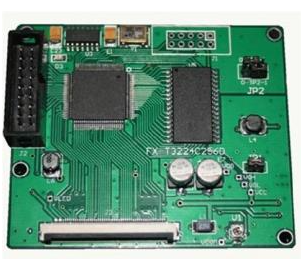PCB proofing refers to the trial production of printed circuit boards before mass production. The main application is the process of electronic engineers designing the circuit and completing the PCB, and then conducting a small batch trial production to the factory, that is, PCB proofing. The specific process of PCB proofing is as follows:
1. Contact the manufacturer
1 First, you need to inform the manufacturer of the documents, process requirements, and quantities.
Take Shenzhen Zhongqicheng PCB Factory as an example, first enter Zhongqicheng, and then register the customer number (code "R"), and then there will be professionals to quote you, place orders, and follow up the production progress.
2. Cutting
1 Purpose: According to the requirements of engineering data MI, cut into small pieces to produce plates on large sheets that meet the requirements. Small sheets that meet customer requirements.
Process: large sheet - cutting board according to MI requirements - curium board - beer fillet\grinding - board out
Three, drilling
1. Purpose: According to the engineering data, drill the required aperture at the corresponding position on the sheet that meets the required size.
Process: stacked board pin - upper board - drilling - lower board - inspection\repair
Fourth, sink copper
1 Purpose: Immersion copper is to deposit a thin layer of copper on the insulating hole wall by chemical method.
Process: rough grinding - hanging board - automatic copper sinking line - lower board - dip 1% dilute H2SO4 - thickened copper
Five, graphics transfer
1 Purpose: Graphic transfer is to transfer the image on the production film to the board

Process: (blue oil process): grinding plate - printing the first side - drying - printing the second side - drying - exploding - developing shadow - inspection; (dry film process): hemp board - pressing film - standing - right Position-Exposure-Standing-Development-Check
Six, graphic plating
1 Purpose: Pattern electroplating is to electroplate a copper layer with the required thickness and a gold-nickel or tin layer with the required thickness on the bare copper skin or hole wall of the circuit pattern.
Process: upper board - degreasing - second washing with water - micro-etching - washing - pickling - copper plating - washing - pickling - tin plating - washing - lower board
Seven, remove the film
1 Purpose: Use NaOH solution to remove the anti-plating coating film to expose the non-circuit copper layer.
Process: water film: insert rack - soak alkali - rinse - scrub - pass machine; dry film: release board - pass machine
Eight, etching
1 Purpose: Etching is to use a chemical reaction method to corrode the copper layer of non-circuit parts.
Nine, green oil
1 Purpose: Green oil is to transfer the graphic of the green oil film to the board to protect the circuit and prevent the tin on the circuit when welding parts.
Process: grinding plate-printing photosensitive green oil-curium plate-exposure-exposure; grinding plate-printing the first side-drying plate-printing the second side-drying plate
Ten, characters
1 Purpose: Characters are provided as a mark for easy identification
Process: After the green oil finishes - cool and stand - adjust the screen - print characters - rear curium
Eleven, gold-plated fingers
1 Purpose: Plating a layer of nickel/gold with the required thickness on the finger of the plug to make it more hard and wear-resistant
Process: upper plate - degreasing - washing twice - micro-etching - washing twice - pickling - copper plating - washing - nickel plating - washing - gold plating
2 Tin plate (a process in parallel)
Purpose: Tin spraying is to spray a layer of lead tin on the exposed copper surface that is not covered with solder mask to protect the copper surface from corrosion and oxidation to ensure good soldering performance.
Process: micro-erosion - air drying - preheating - rosin coating - solder coating - hot air leveling - air cooling - washing and air drying